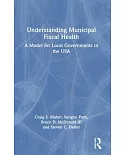"Over the past ten years, the study of mobility has demonstrated groundbreaking approaches and new research patterns. These investigations criticize the concept of mobility itself, suggesting
the need to merge transport and communication research, and toapproach the topic with novel instruments and new methodologies. Following the debates on the role of users in shaping transport
technology, new mobility research includes debates from sociology, planning, economy, geography, history, and anthropology. This edited volume examines how users, policy-makers, and industrial
managers have organized and continue to organize mobility, with a particularly attention to Europe, North America, and Asia. Taking a long-term and comparative perspective, the volume brings
together thirteen chapters from the fields of urban studies, history, cultural studies, and geography. Covering a variety of countries and regions, these chapters investigate how various actors
have shaped transport systems, creating models of mobility that differ along a number of dimensions, including public vs. private ownership and operation as well as individual vs. collective
forms of transportation. The contributions also examine the extent to which initial models have created path dependenciesin terms of technology, physical infrastructure, urban development, and
cultural and behavioral preferences that limit subsequent choices"--





















